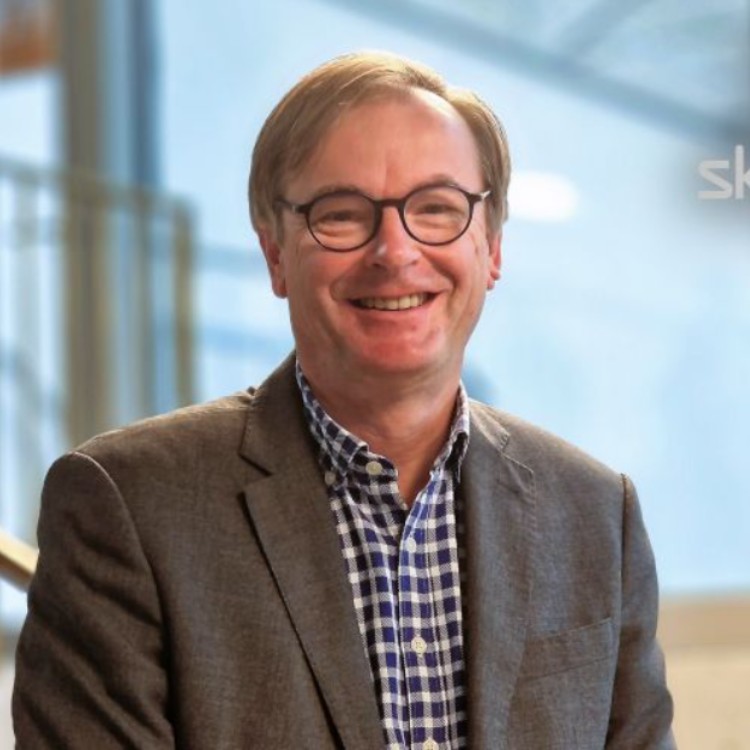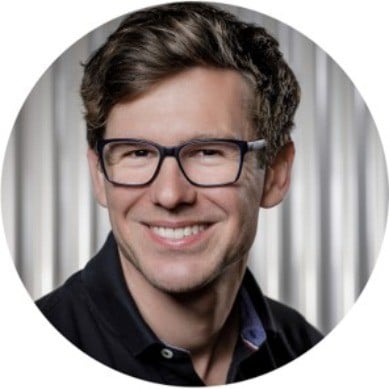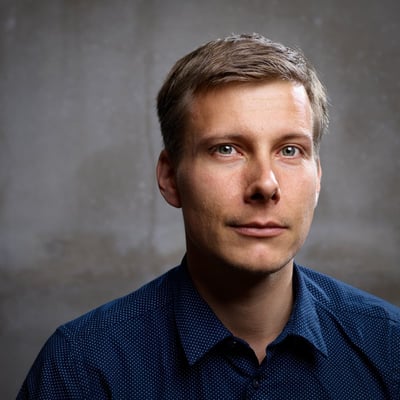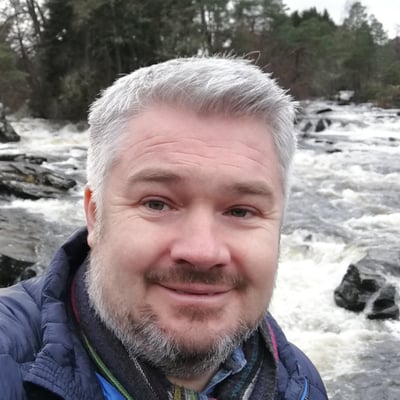Thank you. Thank you. And I'm quite happy to have this chat with you today.
Thank you. Before we go deeper about Skysoft your products and other activities, can you just tell us a bit more about yourself, your career path so far? What brought you to ATM and how you are now the CEO of Skysoft?
Well in fact, I think I joined the ATM world about 20 years after I started but the common denominator of my career, I had always been working on the international markets but I started my careers after my business school working on the gaming industry. Then I switched to the mechanical engineering the electronics for all household appliances and later on I joined company explosives to end up in the ATM as you said 16 or 17 years ago. So that's quite an interesting carrier path, but always motivated by one goal: selling technical products on the international market. So that's basically what I've done until recently where have been nominated after Pierre-Henri Guisan's departure and retirement as a CEO of the company and now I'm sharing my time between the company's management but I still have a foot on the commercial aspects. Of course I cannot leave it like this .
And I can imagine it's hard to leave that completely after so much time. So for people who don't know skysoft, the full name is skysoft-atm. Basically you are a software house and the subsidiary of the Swiss ANSP Skyguide. Can you tell us more about the company history but also about its relationship with Skyguide?
Sure. Skysoft has been in fact created by two persons which are still with us today. Didier Berling who's my deputy, CEO and currently in charge of the R&D department of the company and Loiïc Bontonneau was the technical director and both of them were the founders of the companie. They came with the ideas that they could automate the air traffic management using a much simpler technology that was in place 20 years ago. So going from a very monolithic system to an architecture which is based on windows and on light PCs and servers rather than using the mainframe system that were in place at the time. So that was the origin of the company and progressively we went from a very small startup oriented company to the company that we are today. Almost 90 persons are employed today with Skysoft and growing with time and we had different steps in the growth of our company.
One of the main one was to take on board all the developments that skyguide had in terms of FDP, so that was a first big step. The initial one was more oriented towards the stripless system and mostly focused on the radar air situation display. But in parallel we have also grown other technologies like the recording. So we have grown step by step and the main driver for us was to accommodate the needs of the controllers into our products and the solutions that we are delivering. So that's one of the main driver of what everything we do. We do it first for the controllers and for them to be more productive, more at ease with the solutions they have to work on a daily basis.
That's an interesting point you are touching here but before going into that I wanted to ask you how the working with skyguide is because basically you are subsidiary, you are owned by them, but you are an independent company, you are active on the market. Nevertheless, does this sometime leads to let's say interesting situation? Not to say conflicting.
Conflict, I would not go that far. We are of course always trying to position ourselves as an independent company where we have to do it regularly because of course the share of our business with skyguide is very predominant in our company in terms of numbers of people employed by Skysoft to develop solutions for skyguide. But nevertheless, being on the external market and being able to sell today, I think we have customers in about 30 different countries with different I would say ways of approaching the ATM. In fact with different products makes the combination quite interesting. I think we are able to enrich a little bit the vision of skyguide on what is offered for other markets by Skysoft or by other partners of Skysoft. And at the same time we are of course very much influenced but what skyguide is providing us in terms of experience, in terms of operational knowledge that we have onboarded at Skysoft and that we are able to use to sell our products to other countries. So we are enriching each other and of course we have the ANSP behind us that give us a stability on the market, a good image and vice versa. I think the skysoft image is good also for skyguide because we see skysoft is perceived a dynamic company on the ATM market and quite an expert in his domain. So that's quite interesting combination I would say.
Thank you for that and for being quite open on that. As you mentioned, you are working with air traffic controllers quite closely and actually I've been there myself in different activities and I've seen that actually you are working with agile methodologies, don't want to go into that now, but basically we have meetings between air traffic controllers and people from skyguide every second week I would say if I recall correctly. Do you see that as a key success factor?
Absolutely. I think it's essential and even in the latest developments that we are doing on controller support tools using artificial intelligence for instance here the controller is at the center of the solution. It's really we are bringing the technology to help the controller performing is the job. So for us it's a key factor of success that we have here. And I think when you say we have meeting every two weeks, I think we have meetings every day. We are meeting them, we are in the same premises. We are talking to each other, they are involved in projects they are very close to us and we are quite satisfied with this approach. We are using the same I would say technique with our customers outside skyguide as well. We try to be as close as possible as to the business and to the controllers at the different inps we are going to provide solution that are adapted to them.
So at a typical example is the recording is not a natural things you want to have on your display, but when you work with the controller and you explain them that it could be an added value for them to be recorded, then well they understand there could be a benefit for everyone for the organization, for the controllers to use such technology. That's only an example but that's the same with the radar HMI where in fact we want to have the way controller would solve a conflict for instance used as a basis for the development of our solutions. So that's really using the technology to help the controllers perform his tasks.
That that's really nice and I like how you bring controllers and developers much clutter to each other and I really think that that part of the success story indeed. Now looking at skyguide specifically, so you are doing the development of the radar HMI, of the flight plan systems for them and skyguide has a bit of a different position on the market. They are one ANSP, they used to do this development themselves then came skysoft into the game and they are not part of a bigger alliances here. Thinking of iTec or COOPANS what kind of benefits do you see for them in being using you rather than being in a larger alliance with several ANSPs and go to let's say a massive industry partner?
When you say massive <laugh> of course compared to Skysoft this is a clear statement. Well we are not the only one to do that. I mean I heard an interview you had with our colleagues at Tern in Iceland they have exactly the same setup and you have other ANSPs, the Canadian, they have had the same approach also for some years more or less. But we are not the only one. And I think really the benefit of having this approach again is to come back on what we said earlier is to have a tailormade system really meeting the requirements of the organization of the ANSPs whereby we see that when you have alliances around major system providers there the setup is different. You have the ANSPs aligning on what the manufacturers are proposing and it's hard for them to adapt to something different if they want to or unless they invest quite significantly in changes if they want to.
So that's a different approach. We have a tailormade approach rather than monolithic and approach of the system. Nevertheless we are also working with those system integrators to deploy our recording solutions. For instance we are partnering with Leidos in the states with Indra in Europe, we've Raytheon again in the states and it's a small market. So today we are partners tomorrow will be competitors. That's the way it is and there is no better approach than the other. It's a simply an approach that needs to fit to everyone. And yeah, skyguide has made a choice. We are very happy about this choice and guess what? I hope other ANSPs will do the same
I hope for you indeed. You mentioned video recording a couple of times and this was part of the process. You mentioned at the beginning of the company with changing the automation and so on. Also going with the introduction of stripless, you realized quite quickly that video recording would be needed. It would not just be nice to have it something without it. It becomes really hard to analyze problems but then it turned into a success story in a different way as well because now you have customers outside of ATM but more in the video world, the control room and this kind of customers. Can you tell us more about this?
Yes, in fact we realized three, four years ago that we could offer the same approach to the control room industry than the one we had offered to the ATM simply being 20 year or almost years after the control room market is exactly at the same position. The ATM was 20 years back when we introduced the video recording. It's a new feature on this control room market and by the experience that we have acquired, the technology that we have developed, we are able to propose really an innovation that is really going to be needed on the control room market in the coming years. We are pretty sure about that already. We have signed partnership with the major system providers in the control room business. The providers of KVM solutions or video walls, that type of application, they are all interested by the concept of recording what the staff are doing in order to help with training or for investigation purposes or for the communication with the system manufacturers in order to debug system and thing like that. So that's exactly the same approach brought to a different business but with the same kind of benefits for the user at the end of the day.
Have you seen some cases where you have cross feeding between ATM and non-ATM activities? So that will be a feature developed specifically for ATM in the recording that some of your ATM customers want or vice versa? Are the two markets different?
No, the two markets are very different, but the technology behind it is the same or roughly the same. We have adapted of course our system to the control room environment, but the system behind it is quite having the same type of performance and functionalities. What the control room industry is really using for is more for training purposes as we can see today, and also to capture evidences in case of crisis. This system is used to identify the behavior of the staff if the reaction was appropriate. We are also providing synchronization with voice recording was the analysis of the staff correct when he proposed such and such intervention on the field and so on. That type of thing is different from what the controller would have to address in his daily work. But I would say the underlying of the technology is the same.
Okay, good. You mentioned earlier you have customers in more than 30 countries. I guess you have a lot of small and bigger stories about that, but can you bring us through a few cultural differences that you've seen or experienced across different customers outside and all over the world?
Well of course we have different approaches. If we are talking to our colleagues in Germany or in the US already, it's a different commercial approach obviously. So in Germany we have been able to sell our system directly to DFS and we are interacting directly with them. Whereas in the US we have worked closely with Leidos which integrated our solution in their own system to sell it to the FAA. But by this I mean for the same purpose for the same use afterwards, but different approach expanding to different cultural approach, but also commercial approaches in the countries. Now the use of the system being in the ATM is almost the same from one country to the other. It's again, training investigation and system debugging so that the main three. But to reach the goal of selling then we have to use different approaches.
I can't imagine that can be quite different. Indeed. Finally, to wrap up just wanted to ask you our standard signature question. What kind of evolution do you see in ATM for the next five years and to make it a bit more open to fronts also in the next 50 years?
I mean, the first challenge that we have to address for the ATM is the new entrants as we call it, the drones. So we have to make sure that in the coming years we have a suitable and global approach to the way we are introducing drones into our commercial airspace. I don't think we will have the possibility to segregate the two the drone and the navigation or traffic completely for long. I think they will have to go to work into the same airspace to live in the same airspace. So for me, the first challenge we would have to address. Now the other thing is, and there I see a longer term than just the next few years, is that we have to have the different stakeholders working together. When I mean by stakeholders are the ANSPs, the airports and the airlines offering combined solutions and optimization rather than working in silos.
And this for me is probably the next step to achieve today. We see with sales our approaches to work to have those different organization working together, but I think we can bring them even closer and we are already working on some technologies that would take us there within a few years. But I really think that's the next challenge. If we want to address, I think there will be still a growth of in our sectors in air traffic management and we will be able to achieve that smoothly only if the airports, the airlines, the ANSPs are working much closer together than what they are today.
Claude, thank you very much for being our guest today. I guess we could go on for hours and hours, but we have limited time. Thank you very much and talk to you again. So
Thank you. Thank you Vincent. So you soon in Geneva.




